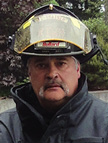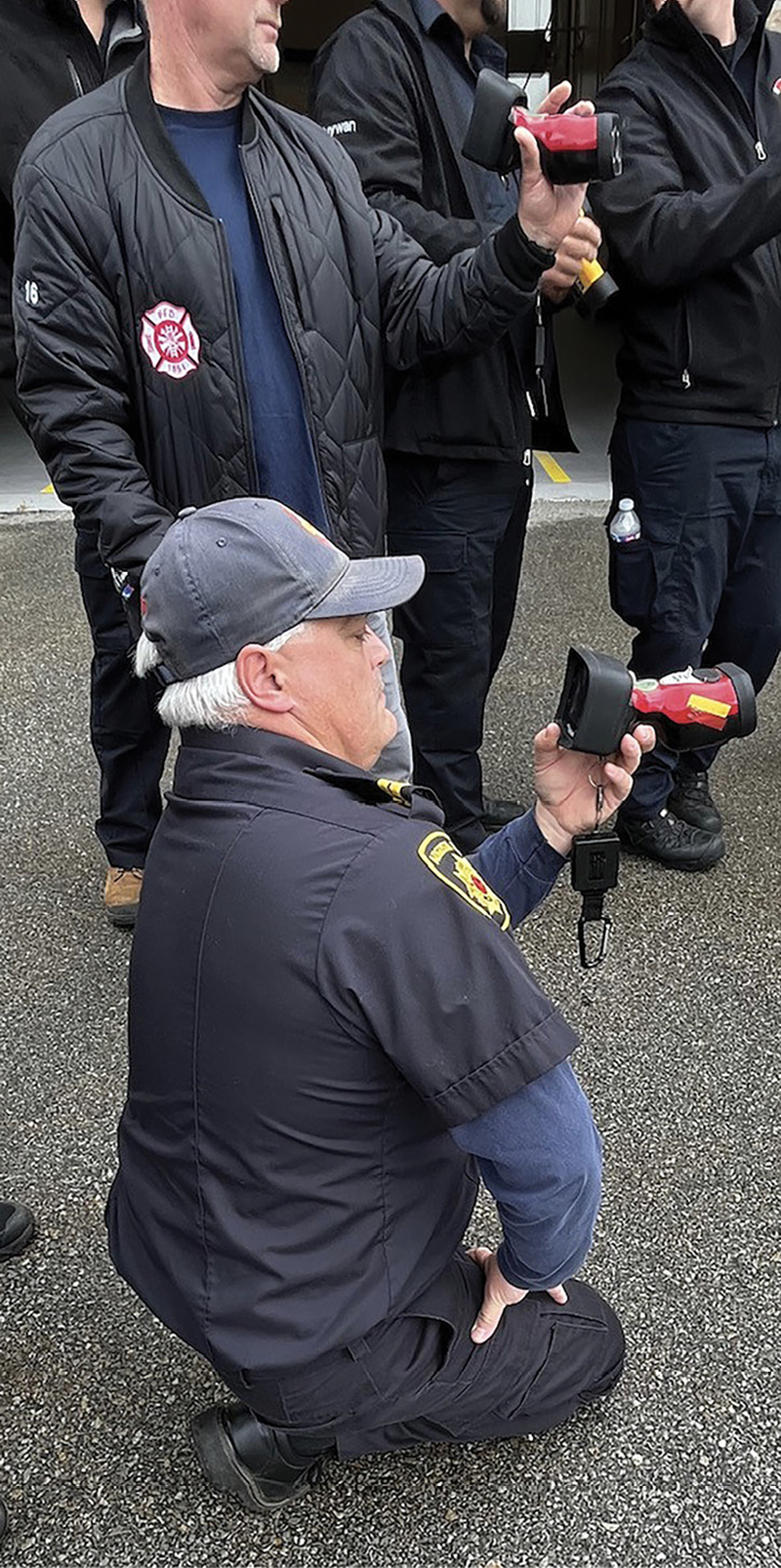Decision making is the process of making choices by identifying a decision, gathering information, and assessing alternative solutions. Using a step-by-step decision-making process can help you make more deliberate, thoughtful decisions by organizing relevant information and defining alternatives.

However, a decision-making thermal imager (TI) is usually used by professionals such as firefighters, law enforcement officers, and search and rescue teams to quickly make informed decisions based on temperature changes and sources of heat. This type of TI can also be used by building inspectors and energy efficiency professionals to detect heat leaks and insulation problems in buildings. So, what defines a decision-making TI?

1 Firefighters use advanced decision-making TIs during training. (Photo courtesy of Bullard.)
ADVANCED DECISION-MAKING TIs
Advanced decision-making TIs feature higher resolution (320 × 240), a refresh rate of 25 to 60 Hz, a wider field of view, low thermal sensitivity (NETD) of <30 mK to 70 mK, a more accurate temperature range, and image enhancement that provides transparent IR images.
These TIs provide the following:
- High Dynamic Range (0°F to 1,200°F or up to 650°C).
- Super red-hot colorization (yellow, orange, and red).
- Larger display screen size.
- Universal National Fire Protection Association (NFPA) screen symbols: high gain/low gain indicator and temperature reference bar.
- Greater distance-to-spot ratio for temperature measurement.
These TIs provide better information for the end user by producing a more detailed image, allowing for better decision making, and monitoring temperature progressions, all of which could be missed with a lower-resolution TI with slower refresh rate.
Advanced decision-making TIs are used for size-up and locating the seat of the fire, search and rescue and to identify potential victim locations, fire attack and identifying a fire’s severity, evaluating and monitoring structural stability and integrity and identifying building layout and room configuration, more accurate temperature measurement to identify things like overheated ballasts and electrical breakers, and life-saving and tactical decision making.
If all this information looks familiar, and you read last month’s article, then you will recognize this as a continuation. The demands placed on today’s fire service have advanced so much more than years ago. What has changed? Building construction and materials used have altered the course of how firefighters safely perform their tasks. The rate that fire spreads has created significant challenges such as lack of structural integrity in flooring and earlier roof collapses. The firefighter or fire officer who is tasked with using a TI needs the best equipment to quickly and safely make decisions that affect crew safety. Staying ahead of fire and seeing the advancement of thermal layering and bridging aids for faster extinguishment.
Older TIs that do not show detailed thermal layering, have transparent colorization, or have slower refresh rates and detrimental effects on the critical decision-making process should be replaced with more advanced and newer thermal technologies.
COMMON FEATURES
NFPA 1801, Standard on Thermal Imagers for the Fire Service (2021 ed.), stipulates that only the following can be displayed in “Basic Mode”:
- Grayscale imagery with white hot polarity.
- Power source status indicator.
- Internal electronic overheat indicator.
- TI “on” indicator.
- Color temperature reference bar.
- Any audio, video, or data recording.
“Basic Plus Mode” allows manufacturers to have their various advanced features activated such as the following:
- Heat Seeker Plus.
- Hot/cold area detection.
- Electronic thermal throttle.
- User-selected color mode—i.e., fire, search and rescue, heat.
DEPLOYMENT STRATEGY
How does your fire department operate in terms of using a TI—fire officer, firefighter, safety or accountability officer, single-use TI only, multiple-use TI, situational awareness TIs only, or a mix of situational awareness and advanced decision-making TIs? What are your fire department’s operating guidelines for TI use? What training has your department formally received? Was it in-house only? Do you follow NFPA 1408, Standard for Training Fire Service Personnel in the Operation, Care, Use, and Maintenance of Thermal Imagers (2020, ed.)?
For the firefighter or officer who is tasked with using a TI, knowing what it can do for you is based on your having the proper training and understanding of image interpretation. Just picking up a TI back in the firehouse does not make you a proficient operator. Your crew plus any potential victims’ lives are at stake the moment you arrive on scene and start to identify a decision, gather information, and assess alternative solutions.
MANFRED KIHN is a 19-year veteran of the fire service, having served as an ambulance officer, emergency services specialist, firefighter, captain, and fire chief. He has been a member of Bullard’s Emergency Responder team since 2005 and is the company’s fire training specialist for thermal imaging technology. He is certified through the Law Enforcement Thermographers’ Association (LETA) as a thermal imaging instructor and is a recipient of the Ontario Medal for Firefighters Bravery. If you have questions about thermal imaging, e-mail him at Manfred_kihn@bullard.com.

